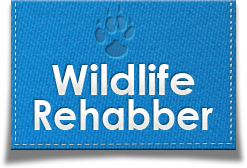Category: Rehabilitation Information
Incubators
Incubators are a vital component in caring for neonatal mammals, hatchling birds, other orphaned wildlife, and eggs. Most very young animals need supplemental heat in order to survive. Fertile eggs also need constant heat (and humidity) in order to properly develop. The type of incubator to use is dependent on its intended purpose. Extremely young … Continue Reading
Competitive Exclusion
What the heck is competitive exclusion? Simply put, it is using “good” bacteria to control “bad” bacteria. It is a naturally occuring process in a bird’s body in which the microflora in a bird’s gut gives it some immunity from infection. The “good” bacteria basically blocks all the sites on the intestinal walls where infection … Continue Reading
Avian Digestion
A. Mouth 1. The Mouth consists of the upper maxilla and the lower mandible and is called the beak2. Lack of teeth may be an adaptation for flight, birds have lighter jaw bones and muscles. 3. The beak and tongue manipulate food. Lacking a soft palate, and the hard palate is divided by a … Continue Reading
Avian Nutrition
Unfortunately there is not a lot of information available regarding the nutritional requirements of wild birds. Most nutritional research has focused on species that are used as food by humans, with emphasis on chickens. Research has recently been branching out towards the nutritional needs of our companion birds. But it will be a long time … Continue Reading
Culturing House Fly Larvae (Maggots)
We go to great effort and expense in attempting to provide the appropriate diet to the variety of species in our care. Yet we actually have a self-renewing resource readily available to us. After extensive research by the medical community regarding the use of larvae in human wound management, the culturing of house fly larvae … Continue Reading
Wing Fractures
The ability to identify and address wing fractures is a necessity for all avian rehabilitators. Even if you are fortunate enough to have a veterinarian readily available to treat all your birds, you should still be familiar with wing wraps in order to stabilize fractures prior to treatment. An understanding of avian anatomy is critical. … Continue Reading
Beak Function
The beak of a bird is considered a lightweight, bony elongation of its skull. The structure of the beak is covered with keratin, the same material found in human fingernails and hair. On many birds, the keratin dries to form hard, glossy, outer covering. The keratin renews on the tip and edges of the beak … Continue Reading
Vitamin and Mineral Content Sources
Vitamin A: liver, eggs, fish liver oils Vitamin B1: brewers yeast, grains, molasses, meats, poultry, fish, eggs Vitamin B2: Brewers yeast, molasses, eggs Vitamin B6: Meats, yeast, molasses, wheat germ, green vegetables Vitamin B12: fish, eggs Biotin: egg yolks, liver, brewers yeast, whole grains Choline: egg yolks, brewers yeast, wheat germ, soy beans, fish Folic … Continue Reading
Metabolic Bone Disease
Metabolic bone disease, or MBD, is a preventable problem that can occur in animals we rehabilitate. MBD has also been seen in wild animals with no prior human contact, though this is rare. A knowledge of this condition, and it’s causes, can help us care properly for those species particularly at risk. MBD is most … Continue Reading
